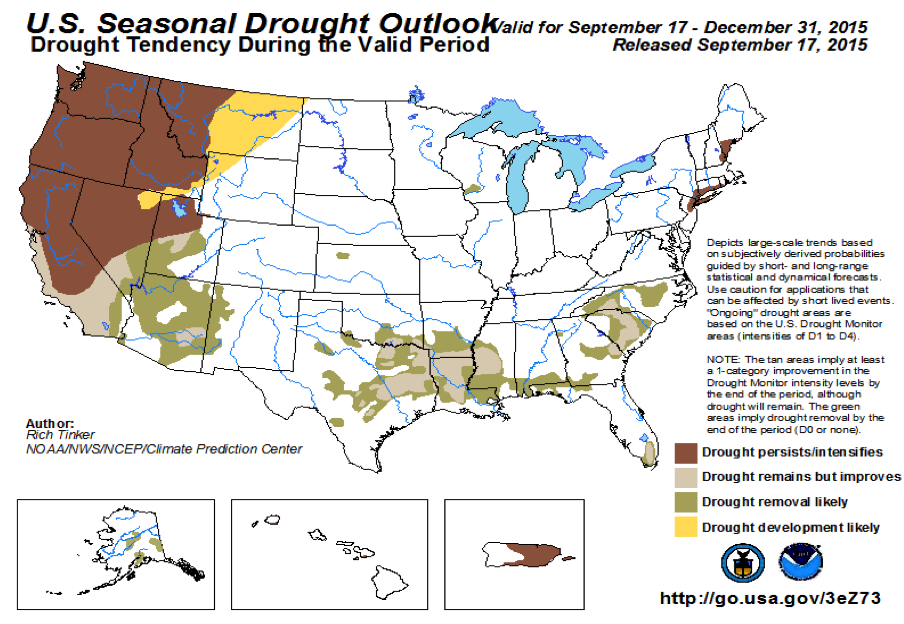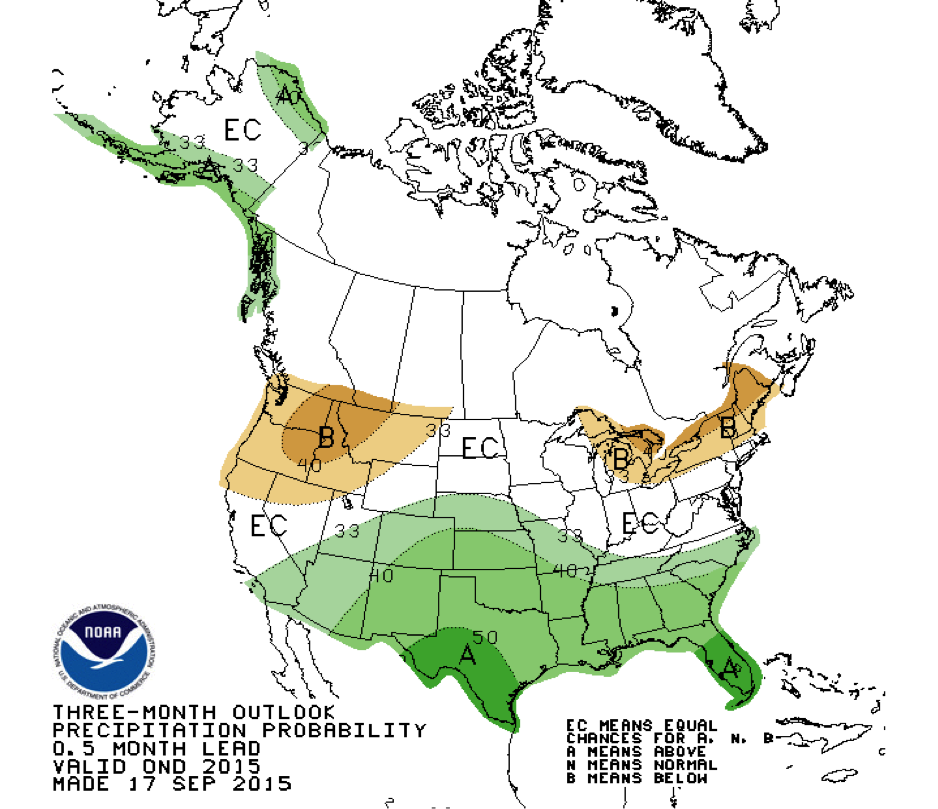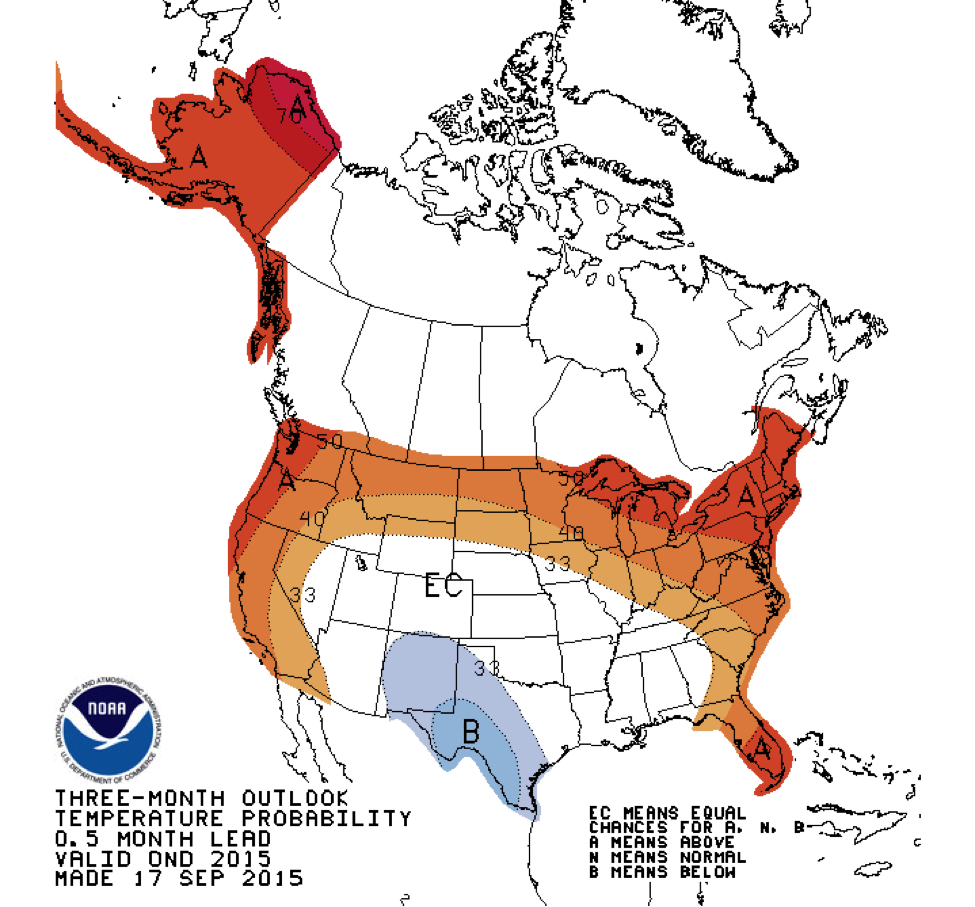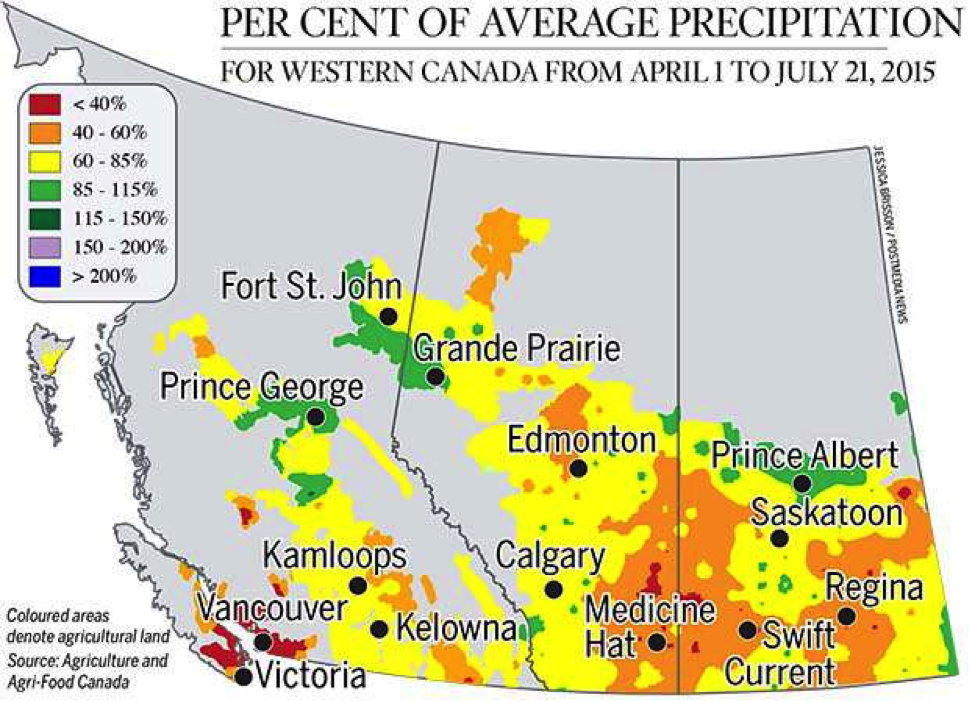The Western United States has been drastically affected with a devastating drought, leaving the area with little water for crops and people, causing fatal wildfires; killing people and cattle. California has been in a severe drought since 2013, with drought status being elevated to exceptional drought in 2014. People on the West Coast are banking on El Nino to help put a dent in this fatal drought, but even a wet winter with higher than average precipitation amounts would still likely leave the region in its drought state. Although any rain will be eagerly welcomed to the region, the dry ground will have a hard time absorbing heavy rain falling at fast rates, perhaps leading to devastating mudslides and landslides.
There has been an abundant amount of wildfires in California in the past few weeks and it will take weeks longer for them to be fully contained. Thousands of buildings, and hundreds of homes and structures have been destroyed. 700,000 acres burned thus far in California this year, which surpasses the average of 500,000 acres. These fires are worse this year because it has been so dry and hot, allowing the fire to catch and spread more easily. The major reservoirs currently hold less than half the water it usually has; wells are drying up and underground aquifers dried up so much that the ground is sinking about two inches per month. Also, the Sierra snowpack is at a startling 5% of normal which is the lowest recorded in 500 years. The snowpack contributes to about 30% of California’s annual water supply.
Looking ahead over the next three months, Figure 1 shows the West Coast drought conditions intensifying. Figure 2 and Figure 3 show the next three months’ anomaly probability of precipitation and temperature, respectively. The drought will likely persist with below average precipitation and above average temperatures expected through the end of the year.
Figure 1: U.S seasonal drought outlook for September 17th – December 31, 2015.
Figure 2: U.S precipitation probability seasonal outlook for October – December 2015.
Figure 3: U.S temperature probability seasonal outlook for October – December 2015.
This drought is not just seen in the United States, but also in Canada. They are experiencing the worst drought in more than a decade due to the widespread dry and hot conditions in the West. Figure 4 shows the percent of average precipitation in the Western Provinces. It’s drastically affecting farmers’ crops and cattle. The wildfires this year are at ten times the normal amount, with more than 1,400 fires.
Figure 4: Western Canada percent of average precipitation from April 1 – July 21, 2015.
Summary
This is one of the worst droughts seen through Western United states in over a century and Western Canada in over a decade. The effect on the water supply is affecting cattle, agriculture, and people. The amount of wildfires and the amount of acres burned are above average due to below average precipitation and above average temperatures. These wildfires are destroying properties, land, people and animals. Unfortunately it does not seem that the El Nino winter will reduce much of this drought for the area.




